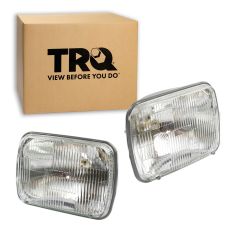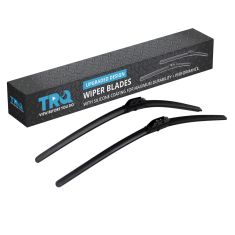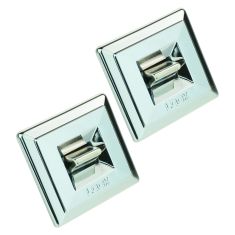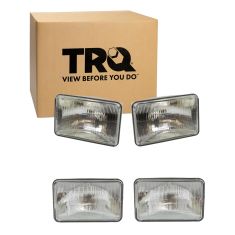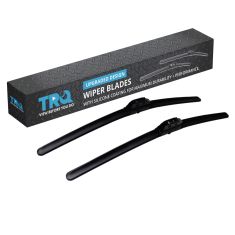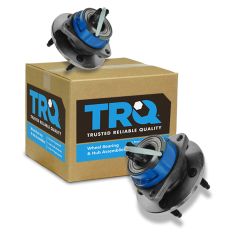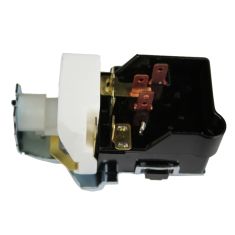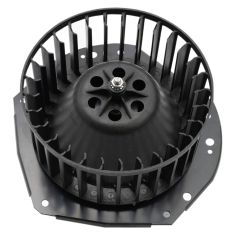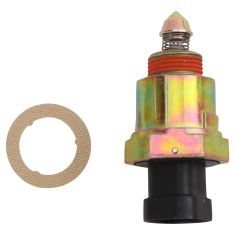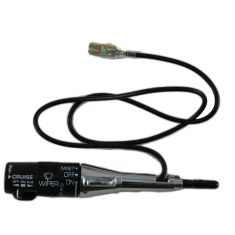Pontiac Bonneville
-
Notify When Available$51.95Save 24%List $67.95 Save $16.00Brand: TRQ - HLA93557$51.95Save 24%List $67.95 Save $16.00
-
Notify When Available$34.95Save 31%List $50.95 Save $16.00Brand: TRQ - WPB54571$34.95Save 31%List $50.95 Save $16.00
-
Notify When Available$24.95Save 34%List $37.95 Save $13.00Brand: TRQ - SWA40811$24.95Save 34%List $37.95 Save $13.00
-
Notify When Available$84.95Save 11%List $95.95 Save $11.00
Replaces 4 Piece Headlight Set TRQ LKA93536
Brand: TRQ - LKA93536$84.95Save 11%List $95.95 Save $11.00 -
Notify When Available$37.95Save 42%List $64.95 Save $27.00Brand: TRQ - WPB54556$37.95Save 42%List $64.95 Save $27.00
-
Notify When Available
Replaces Driver & Passenger Side 2 Piece Wheel Bearing & Hub Assembly Set TRQ BHA50039
Brand: TRQ- BHA50039$129.95Save 13%List $149.95 Save $20.00Brand: TRQ - BHA50039$129.95Save 13%List $149.95 Save $20.00 -
Notify When Available$29.95Save 14%List $34.95 Save $5.00
-
Notify When Available$84.95Save 27%List $115.95 Save $31.00Brand: TRQ - HMA80108$84.95Save 27%List $115.95 Save $31.00
-
Notify When Available$28.95Save 17%List $34.95 Save $6.00
Replaces Idle Air Control Valve TRQ AIA93057
Brand: TRQ - AIA93057$28.95Save 17%List $34.95 Save $6.00 -
Notify When Available$29.95Save 29%List $41.95 Save $12.00Brand: TRQ - SWA41768$29.95Save 29%List $41.95 Save $12.00
Harley Earle and the Bonneville Concepts
Before the Bonneville became Pontiac’s top-end model, it was a concept car meant to bring a new sporting sensibility to the Pontiac brand. Unfortunately, by the early 1950s Pontiac developed a reputation as stodgy and the brand wanted to focus on a more youthful market. Around the same time, top GM designer Harley Earle took a trip to the Bonneville Salt Flats. The salt flats of Bonneville, Utah had been known since just after the turn of the century as a place to gather for drivers looking to set speed records (and the flats continue to see new records today). Inspired by the racers he saw in Utah, Earl wanted to build a sporty car worthy of the name Bonneville.
Earl led a team that built two concept cars to be displayed at the General Motors Motorama in 1954. But the Bonneville concept was very different from the Bonneville that would come. It was a two seater with a lightweight fiberglass body and a straight-eight engine. The exterior styling took cues from aviation with a bubble canopy and gull wing doors. Although the Bonneville concept didn’t have much influence on the Bonneville production car, it did set the stage for Pontiac to develop itself as a performance-oriented brand. Pontiac’s much later Solstice two-seater took some inspiration, in terms of its overall body line, from the Bonneville concept. One of the Bonneville concept cars sold for over $3 million at a Barrett-Jackson auction in 2006.
The Bonneville’s Beginnings
In 1957, Pontiac used the Bonneville name for the highest trim level of the Star Chief full-sized car. The Bonneville trim had a fuel injected V8 and came standard with every option available to the Star Chief line (with the exception of air conditioning, which could still be ordered as an option). This blend of performance and luxury became the hallmark of the Bonneville line for the years to come.
Pontiac spun off the Bonneville as its own model line the following year. It was available as a hardtop or convertible. The Bonneville was available with one of three 370 cubic inch engines. Unlike other manufacturers, Pontiac liked to use the same engine block — and even the same cylinder bore — for many of its engines. Pontiac used the same block for V8s ranging from 326 to 455 ci. There were no “big block” Pontiac engines, but there were “big bore” engines. Even among engines with the same displacement, the heads, tuning, and fuel system could differ to provide different driving characteristics.
The 1958 Bonneville offered a 398 ci engine with a single four barrel carburetor, fuel injection, or a three-carburetor setup referred to as “Tri-Power.” The Tri-Power setup had a central carburetor for normal use and two secondary carbs that worked under heavy load. In 1959, The Bonneville became a full-fledged model line, available as a coupe, convertible, sedan, or the Safari station wagon. The engine displacement was bumped up to 389 ci, with a number of variations to provide different driving characteristics. The wagon for example was calibrated for more low-end torque. The 398 engines could put out up to 300 horsepower.
The new Bonneville offered other improvements. A clutch based limited slip differential called “Safe-T-Track” became available as an option and the frame was widened from 59 inches to about 64 inches. Pontiac began advertising the handling benefits of its “Wide Track” cars. Popular Science raved that "Wide Track is the outstanding automotive advance of the year... We firmly believe that in moving the wheels farther apart, to develop the widest stance of any American car, Pontiac has created an entirely new sense of balance of handling security." 1959 marked the year that Pontiac arrived in the public consciousness as a performance brand, and the Bonneville was a big part of that. That year Popular Science wrote that Pontiac was “no longer merely an older, gawky brother of the Chevrolet."
Pontiac updated the Bonneville again in 1961. Engines were now available ranging from 389 to 421 ci. The 389 and 421 were both available with the Tri-Power carburetion system. The 421 was also available with two four barrel carburetors. In that configuration it could put out 405 hp. The styling was also updated. The Bonneville got the two piece grille and vertical headlights typical of other Pontiacs at the time. The Bonneville was available with cloth, leather or vinyl seats. Air conditioning, power seats, and power windows were other popular options that added to the Bonneville’s feeling of luxury.
In 1965, the Bonneville got a new “coke bottle” shape. At first the engine options stayed the same, but changes came for 1967. The Tri-Power engines were phased out, and the base engine was increased from 398 ci to 400 ci. It was bumped up again to 428 ci in 1969 and 455 in 1970.
The Scaled Back Bonneville
In 1971, Pontiac introduced the new Grand Ville to be its top of the line model. The newly updated Bonneville would now play second fiddle. The Bonneville wagon was dropped, leaving coupe, sedan, and hardtop body options. GM was also reigning in its engines. Leaded gasoline, which reduced pre-combustion, was being phased out, so GM engines had to have their compression reduced. The Bonneville’s 455 ci engine dropped to 325 hp.
Around this same time, manufacturers switched from gross horsepower ratings, based on testing an engine with no exhaust equipment or accessories hooked up, to net horsepower, based on testing an engine with accessories running, as it would be run in the car. The 455 produced 250 net horsepower. This shift in measurement can make the power reduction look more drastic than it really was, but make no mistake, performance was down in the 1970s.
In 1973, the engine was dropped to a 400 ci V8 that put out 170 net horsepower. The exterior styling changed in 1975 to borrow cues from Cadillac, including rectangular headlights and optional opera windows.
Pontiac released the next generation of the Bonneville in 1977. The wheel base and overall length got about a foot shorter, but legroom and headroom stayed virtually the same. The wagon came back to the lineup in six seat and nine seat versions with woodgrain trim.
As the energy crisis of the 1970s wore on, Pontiac started fitting smaller engines into the Bonneville, including a 231 ci Buick V6 and Pontiac V8s of 265 or 301 ci. The 301 was the last engine produced by Pontiac. After it was phased out, along with the Bonneville, in 1981, Pontiac cars used Buick, Chevy, or Oldsmobile engines. Rather than designing a new replacements for the Bonneville, Pontiac moved the Bonneville name to another one of its cars. The LeMans wasn’t selling well and Pontiac thought the Bonneville name had enough good will to improve sales of their mid-size car. The new Bonneville shared its platform with the Buick Regal and Chevy Malibu. This was the smallest Bonneville yet, but was still available as a sedan or wagon.
Forward with Front-Wheel Drive
GM introduced its new front wheel drive H-Body cars in 1986. The Bonneville joined the Buick Lesabre and Oldsmobile 88 as a FWD car the following year. The new Bonneville was only available as a sedan and used Buick’s 3.8 L (that’s 231 ci) V6 to make 165 hp. Car and Driver put the new Bonneville on its 10 Best list in 1987, calling the car’s interior “the closest thing to a BMW’s this side of the Black Forest,” and noting that the engine was capable and “never complain[ed].” Over the years, it gained new features like optional keyless entry and a CD player.
Although the platform remained the same, the Bonneville got exterior and interior makeovers for 1992. The 3.8 was bumped up to 170 hp and could be optioned with a supercharger that increased power to 205 hp, making the car reasonably quick for a sedan. Pontiac sold almost 100,000 Bonnevilles in 1992. The Bonneville had some exterior features, such as headlights, tail lights, and the grille, restyled in 1996.
The End of the Bonneville
In 2000, Pontiac introduced the tenth generation of the Bonneville, which would turn out to be the last. The new Bonneville retained the Buick V6 engine. In 2004, it would gain Cadillac’s 4.6L Northstar V8 for the sporty GXP trim. This was the first V8 offered for the Bonneville in almost twenty years. The Bonneville track width was about 62 inches, making it the widest car in its class, reminiscent of the “wide track” Pontiacs of the ‘60s. GM advertised the new Bonneville with the slogan “Luxury with Attitude.”
Unfortunately, the Bonneville’s rediscovered attitude wasn’t enough to revitalize the brand. By 2004 sales had fallen below 30,000. Hemmings lamented the lack of press for the new Bonneville, saying “the people who dig ’em most know nothing about ’em.” It seems that drivers who might have bought the Bonneville were instead opting for the Buick Lucerne or the Chevy Impala. GM discontinued production of the Bonneville in 2005.
Need Bonneville Parts?
For well over four decades the Bonneville has been a staple car of the Pontiac marque. Taking its name from the Bonneville Salt Flats located in Utah, the Pontiac Bonneville debuted in 1957. The first few incarnations from the 50's and 60's are considered highly collectible, due to their fully loaded set of options, powerful V8 engines, classic styling, and low production numbers. Originally a full size luxury Pontiac, the Bonneville suffered the same reductions in size through the 70's as several other vehicles of that era due to strict emission regulations. However, the Pontiac Bonneville won back the hearts of drivers, gaining a spot on Car and Driver magazine's Ten Best List for 1987. Now that it returned to its full size sport oriented luxury roots, the Pontiac Bonneville continued to offer the performance, spaciousness, and comfort it was known for. As the 90's passed however, the Pontiac Bonneville sales slipped as fewer drivers wanted the front wheel drive V6 and V8 engine combination. With the luxury being replaced with gimmicky options and a dwindling market for a sporty full size automobile, Pontiac declared in 2005 that there would be no more Bonneville's. The end of an era, the Pontiac Bonneville had been an automotive force for nearly 50 years.
1A Auto Parts supplies Pontiac Bonneville aftermarket replacement parts for both the classic and modern versions of Pontiac's top of the line car. 1A Auto Parts supplies carpeting, mirrors, headlights, taillights, weather-stripping, shocks and more for your Bonneville. All of our in stock Bonneville parts are backed by the industry's only 'No Hassle' return policy. Have a question about your Pontiac Bonneville? Our courteous customer service representatives have over 150 years combined automotive expertise. No one is more qualified to answer questions about your Bonneville. We offer prompt responses, 99.9% of our inbound calls are answered within one minute and emails responded to within an hour. We ship parts fast 98% of our in stock Pontiac Bonneville parts are shipped within one business day. 1A Auto Parts trained product development team spends 8,000 hours a year researching our new aftermarket parts. We provide 4 times more technical information per part than our competitors. Go ahead, check out the industry leading 1A Advantage. Buy the best quality aftermarket Pontiac Bonneville parts available from 1A Auto Parts, all within the comfort of your own home.
The Pontiac Bonneville has enjoyed almost 50 years of uninterrupted production, something few other automobile lines can have accomplished. Now discontinued, your Pontiac Bonneville still needs new parts to keep functioning in top shape. 1A Auto Parts provides new Pontiac aftermarket parts to maintain your Pontiac Bonneville. Our new aftermarket Bonneville parts last 2-3 times longer than used OEM Pontiac parts. Compare a Pontiac dealer OEM part to 1A Auto Parts Bonneville parts and save 30-50%. Don't waste time with the competition; buy your new aftermarket Pontiac Bonneville parts from 1A Auto Parts today.
